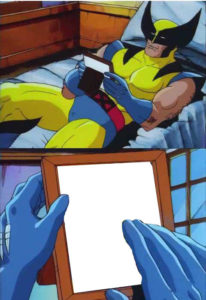There’s no way around it: writing a strong conclusion is tricky. For one, there are many different elements the concluding paragraph must have if the reader is to leave satisfied. A writer needs to ensure their main points are addressed in a concise way, not merely rehashed. Also, if a writer is working on a paper where a claim has to be made and defended, emphasizing the thesis again is crucial so the writer can leave a lasting impression on their audience—but this needs to happen without sounding redundant. You don’t want to end with a fizzle, but with a bang—and this has proven to be harder for some than most.
Luckily, at the WRC, our tutors are more than capable of helping a writer craft an all-encompassing conclusion that leaves the reader feeling complete. When you think about how a paper is composed, the introduction and conclusion are virtually the most influential sections because they set up and wrap up your narrative, respectively. Think of them as the boundaries or frame that your picture needs to stay within, and the body of your paper is the image that fills it. Taking this approach emphasizes the importance of the boundaries you’re setting, with the main points of your argument defining this unique border.
Our friends at writing centers across the country have published similar works that aid in writing a conclusion, all emphasizing how paramount having an ending with sufficient closure is, as well as some helpful hints of what works well when crafting a conclusion:
Ending with a sense of closure, linking the first paragraph back to your conclusion, will answer all lingering questions that may have surrounded your paper (Harvard). In order to bring this closure, you can evoke a vivid image that allows the reader to clearly envision your point (Richmond). Also, to make sure your conclusion is serving its purpose, remind the reader of your thesis statement and answer the question, “So what?” (Webster). Finally, you should aim to synthesize, not summarize: Include a brief summary of the paper’s main points, but don’t simply repeat things that were in your paper. Here, you should show your reader how the points you made are supported and how the examples you used fit together (UNC-Chapel Hill). These are just a couple of strategies that have worked well for writers when forming conclusions, and the WRC always keeps these tools in mind.
However, as many ways as there are to compose a well-written conclusion, there are just as many ineffective methods. For instance, beginning with an unnecessary, overused phrase such as “in conclusion,” “in summary,” or “in closing” could be detrimental to the momentum of your paper. Although these phrases can work in speeches, they come across wooden and trite in writing (UNC-Chapel Hill). To keep your conclusion concise and on-track, you should also avoid introducing a new idea or subtopic—this will distract the reader and potentially undercut your previous arguments (Richmond). Another note to keep in mind if you wish to maintain a level of credibility is to not apologize for what has been written. By the time you’ve finished writing, you may be having some doubts about what you’ve produced. Repress those doubts. Don’t undercut your authority by saying things like, “This is just one approach to the subject; there may be other, better approaches. . .” (Harvard). A writer should have confidence in what they’ve written, and your conclusion should put to rest any doubts a reader may have had.
(In Conclusion) This is the part where you’ve exhausted yourself writing this paper, and you’re at the home stretch. The finish line is in sight, and instead of gearing up to finish strong, a lot of writing feels drained and limps en route to completion. Luckily, if your road seems unending, WRC tutors can help you cross the finish line with confidence. Tutors at the WRC are capable of helping you find what did or did not work, bring these facts to light, and help you piece together a conclusion that brings everything full circle.
— Peter
Sources: http://writingcenter.unc.edu/handouts/conclusions/
http://writing2.richmond.edu/writing/wweb/conclude.html
http://writingcenter.fas.harvard.edu/pages/ending-essay-conclusions
http://www.webster.edu/academic-resource-center/writingcenter/writing-tips/conclusions.html

